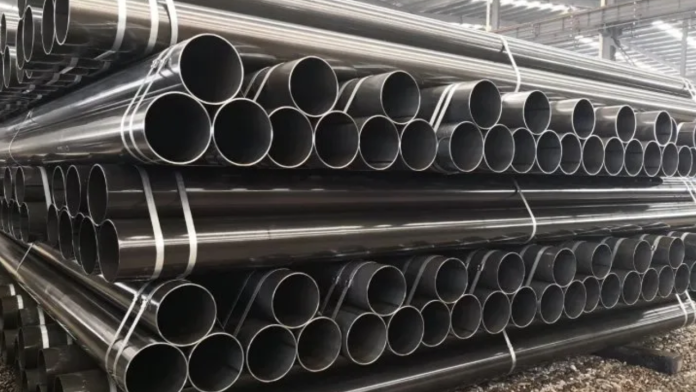Carbon steel pipes, integral to the infrastructure of various industries, are renowned for their strength, durability, and versatility. Comprising primarily of iron and carbon with small amounts of other elements, these pipes exhibit exceptional mechanical properties, making them well-suited for an array of applications.
Carbon steel pipes are classified into seamless and welded varieties, each with distinct advantages. Seamless pipes, formed by extruding a solid billet, offer enhanced strength and a smooth interior surface, ideal for high-pressure applications. On the other hand, welded pipes, crafted by joining steel sections through various methods, provide cost-effective solutions for diverse construction needs.
Additionally, galvanized carbon steel pipes, coated with zinc for corrosion resistance, find application in harsh environments. For many systems around the world, carbon steel pipe are essential to maintaining the integrity and dependability of various systems, whether they are used to facilitate fluid transport, support structural frameworks, or function in vital industrial processes.
Composition of Carbon Steel Pipes
Carbon steel pipes are the foundation of many industrial and infrastructure applications due to their exceptional strength, durability, and adaptability. Understanding the makeup of these pipes is critical for engineers, manufacturers, and anybody working in the construction business. In this detailed study, we will look at the precise intricacies of carbon steel pipe composition, focusing on the important aspects contributing to its remarkable performance.
Iron (Fe)
Carbon steel pipes are made from iron, which is the basic element. This strong metal provides structural integrity and the crystalline structure required for the material to be strong. Iron, the backbone of carbon steel, is alloyed with carbon and other elements to produce a strong and versatile material in industrial applications, infrastructure development, and other technical efforts.
Carbon (C)
Carbon, a crucial ingredient in carbon steel pipes, has a substantial influence on their properties. Carbon content, the defining alloying element, ranges from 0.05% to 2.0%, influencing hardness, strength, and ductility. Higher carbon concentrations contribute to enhanced hardness, while lower levels promote ductility. Carbon content is precisely controlled during manufacturing to achieve the necessary balance, making carbon steel pipes a versatile and frequently utilized material in a variety of industrial applications.
Manganese (MN)
Manganese, an important alloying element in carbon steel pipes, increases strength and hardenability. It also helps to build a protective oxide layer, which contributes to better corrosion resistance. Manganese, when added in controlled proportions during manufacturing, affects the overall performance of carbon steel pipes, making them durable and ideal for a wide range of applications in industries where strength and durability are critical.
Silicon (Si)
Silicon, a necessary component in carbon steel pipes, acts as a deoxidizing agent throughout production. Its function is to remove oxygen from the molten steel, thereby preventing the creation of defects. Beyond deoxidation, silicon improves the fluidity of steel, making the production process easier. Its controlled presence in carbon steel improves the material’s overall quality, ensuring that pipes satisfy strength and reliability requirements.
Sulfur (S) and Phosphorus (P)
Sulfur (S) and phosphorus (P) are considered impurities in carbon steel pipes, and their presence is reduced throughout manufacturing. Excess sulfur and phosphorus can degrade the material’s toughness and weldability. By carefully monitoring and limiting the quantities of these impurities, manufacturers ensure that carbon steel pipes keep the desired mechanical qualities, making them suitable for a variety of applications in industries where dependability and performance are crucial.
Trace Elements (Cr, Ni, Mo, Cu)
Trace elements, including chromium (Cr), nickel (Ni), molybdenum (Mo), and copper (Cu), are selectively added to carbon steel pipes to improve certain qualities. Chromium improves corrosion resistance, nickel increases toughness, molybdenum increases strength at high temperatures, and copper promotes corrosion resistance. These carefully chosen trace elements enhance the adaptability and acceptability of carbon steel pipes for a wide range of industrial applications.
Summary
The composition of carbon steel pipes is critical to assuring the dependability and longevity of infrastructure projects. The careful selection of materials contributes to carbon steel pipes’ outstanding qualities, making them indispensable in a variety of sectors. As technology improves, continual research and development refines the composition of carbon steel, pushing the limits of what this versatile material can accomplish in the ever-changing world of building and engineering.











